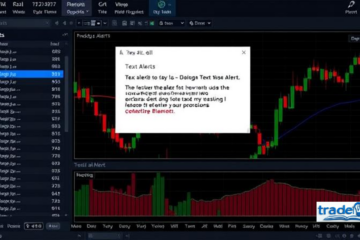The Census of Wholesale Trade is an essential economic survey that provides a detailed overview of the wholesale industry. It serves as a critical resource for policymakers, researchers, and businesses by offering insights into industry structure, performance, and trends. A key aspect of this census is its classification system for wholesale intermediaries, which helps in organizing and analyzing the various entities operating in this sector.
This guide explores the intricacies of wholesale intermediary classification, detailing the different types and the criteria used to categorize them.
Understanding Wholesale Intermediaries
Before delving into the classification, it is important to understand the role of wholesale intermediaries. These entities function as connectors between manufacturers and retailers, ensuring the efficient movement of goods within the supply chain. They typically purchase goods in bulk from manufacturers and resell them to retailers or other businesses. However, their functions can vary significantly based on factors such as ownership, control of goods, and the specific services they offer.
Classification of Wholesale Trade Intermediaries
The Census of Wholesale Trade employs a structured classification system based on the North American Industry Classification System (NAICS), which standardizes business categorization across the United States, Canada, and Mexico. Wholesale intermediaries are classified into several key categories:
-
Merchant Wholesalers
Merchant wholesalers are independently owned businesses that take ownership of the products they sell. They assume risks related to inventory and typically buy goods in bulk for resale at a profit.
Key Characteristics:
- Purchase goods outright for resale
- Assume ownership and inventory risks
- Operate independently
-
Agents and Brokers
Agents and brokers facilitate transactions between buyers and sellers but do not take ownership of the goods. Instead, they earn commissions or fees for their services.
Key Characteristics:
- Do not take ownership of products
- Earn a commission or service fee
- Can represent multiple buyers or sellers
Subcategories:
- Manufacturers’ Agents: Represent manufacturers in specific territories.
- Selling Agents: Have greater authority than manufacturers’ agents, often handling pricing and promotions.
- Brokers: Facilitate sales between buyers and sellers without representing either party.
-
Manufacturers’ and Retailers’ Sales Offices and Branches
These establishments are directly owned and operated by manufacturers or retailers, allowing them to sell their products to businesses without third-party involvement.
Key Characteristics:
- Owned by manufacturers or retailers
- Do not take title to goods
- Primarily involved in sales and order processing
-
Wholesale Electronic Markets
Wholesale electronic markets are online platforms that facilitate transactions between businesses.
Key Characteristics:
- Function as online platforms for wholesale transactions
- May or may not take ownership of goods
- Often provide additional services such as logistics and payment processing
Criteria for Classification
The Census of Wholesale Trade uses several factors to classify wholesale intermediaries:
- Ownership: Determines whether the entity is independently owned or part of a manufacturer’s or retailer’s operations.
- Title to Goods: Identifies whether the intermediary assumes ownership of the merchandise.
- Functions Performed: Examines the intermediary’s role in buying, selling, transporting, storing, or providing market information.
- Legal Form of Organization: Considers the business’s structure, such as corporation, partnership, or sole proprietorship.
Importance of Classification
Proper classification of wholesale intermediaries is vital for economic analysis and industry growth. A structured system offers several benefits:
- Data Analysis: Allows for in-depth assessment of industry trends, emerging opportunities, and potential challenges.
- Economic Indicators: Provides valuable data for calculating key metrics such as sales, inventories, and employment levels.
- Policymaking: Government agencies rely on accurate classification data to develop policies that support the wholesale sector.
- Business Decision-Making: Companies use classification insights to understand their competitive landscape and refine their strategies.
Challenges and Future Considerations
The increasing complexity of supply chains, the rise of e-commerce, and the evolution of new business models present challenges to traditional classification methods. As wholesale distribution continues to evolve, adjustments may be necessary to accommodate:
- E-commerce growth: The increasing role of online wholesale platforms requires updated classification criteria.
- Technology Integration: Data mining and artificial intelligence can improve accuracy in classification and data analysis.
- Globalization: The expansion of international trade necessitates refinements in classification to better capture cross-border transactions.
Case Studies: Successful Wholesale Intermediaries
Examining real-world examples of successful wholesale intermediaries can provide insights into best practices and adaptation strategies:
- E-commerce Integration: A wholesale intermediary that expanded its reach by adopting an online sales model.
- Specialized Services: A wholesaler that differentiated itself by offering product customization and supply chain management.
- Collaborative Partnerships: A company that formed strong alliances with manufacturers and retailers to enhance efficiency and service delivery.
Conclusion
The Census of Wholesale Trade’s classification of wholesale intermediaries is a foundational aspect of understanding this critical sector. By categorizing intermediaries based on ownership, title to goods, functions performed, and legal structure, the census provides a systematic approach to industry analysis. As the wholesale landscape continues to evolve, ongoing refinements to this classification system will ensure its relevance and effectiveness in an increasingly digital and global marketplace. How to Enable Stock Lending with Fidelity




